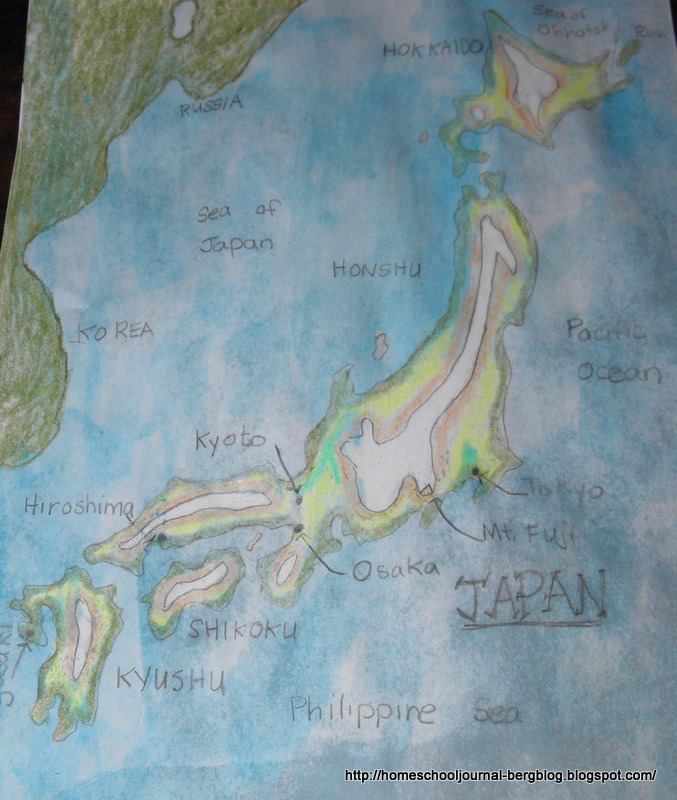Marco Polo was the first European to tell us about the islands of Japan, fifteen hundred miles from the coast of China, now first discovered to the geographers of the West.
"Zipangu," says Marco, "is an island situated at a distance from the mainland. The people are fair and civilised in their manners—they possess precious metals in extraordinary abundance. The people are of gentle manners, idolaters in religion under a king of their own. These folk were attacked by the fleet of Kublai Khan in 1264 for their gold, for the King's house, windows, and floors were covered with it, but the King allowed no exportation of it." - A Book of Discovery
 |
| A Japanese fight against the Chinese at the time when Marco Polo first saw Japanese. |
Although Marco Polo did not travel to Japan, he knew much about it from his association with the Khan of China. We looked at the warriors, castles, and feudal structures of Japan, comparing and contrasting them to the ones of Medieval Europe.

By the 1500s, a class of territorial military lords, or daimyo, emerges; the daimyo establish and maintain their domains (called "han"), build castles, and establish towns around their castles where their samurai retainers reside and serve in their armies. Samurai values of service to a lord and personal loyalty become central to Japanese cultural tradition over the centuries. Zen Buddhism spreads among the samurai, emphasizing personal enlightenment through discipline and meditation. Gardens of raked sand (representing water) and rocks (representing mountains) are used as places of meditation within temples. The ceremony of serving tea becomes a formalized Zen ritual. The tea room or tea house, built for this purpose, has tatami or rush mats for flooring, shoji, or sliding paper and wood screens for room dividers, and a tokonoma, or ceremonial alcove, to place scrolls of calligraphy and flower arrangements. All of these features become central to Japanese architecture and room furnishing. The warfare in this period is so intense and the society so torn apart that the major goal of the daimyo who reunify Japan in 1600 is the establishment of order.
 |
| Student's copywork (Japan had knights called Samuari and lords called diamyo.) |
 |
| photo from Layers of Learning |
We also learned bout Woku, or Japanese pirates, who would sit among the many islands of the Japanese archipelago and the Chinese coast waiting for trading vessels to come along. They grew bolder over the years and raided coastal towns, even traveling up rivers in China and repeatedly looting the capital city of Korea. The Wokou were supported and commanded by coastal feudal lords of Japan. Most of them were peasants who were sent out to loot for their lord. We filled out this map from Layers of Learning.









